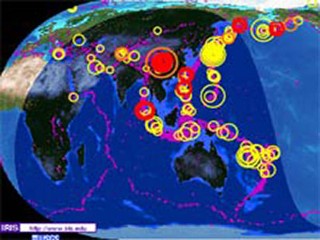
|
LOS ANGELES, Sept. 19 (Xinhua) -- U.S. researchers are studying the possibility of using Twitter to report earthquakes, a U.S. Geological Survey (USGS) scientist said here Saturday. "There are going to be times when you see quake tweets before you get the scientific data from the seismograph networks," said USGS seismologist Paul Earle. "They are actually doing this right now."
The USGS coordinates a continent-wide system of motion acceleration detectors, communications lines and scientific experts that can report a quake's epicenter, magnitude and danger within 2-3 minutes of a quake's occurance.
USGS researchers are now poking around the Internet to see if tweets can beat seismographs in reporting earthquakes, Earle said, adding that Twitter quake reports start to come in within 60 seconds.
Scientists have begun using a Twitter pipeline to monitor and count the use of the words quake, earthquake and terremoto -- the Spanish word for earthquake -- on the Web.
"We're just starting to look into how well a system based on social networks would work," Earle said.
An existing system called "Did You Feel It?" asks persons visiting the USGS website to answer questions about how strong an earthquake was felt, and has provided valuable and accurate information to seismologists about stricken areas in rapid time after quakes.

Mining Twitter and other networks will not deliver "really good, actionable information" like you would need to decide on shutting down the nuclear power plant, said Earle.
"But it will give us a bulletin that something has happened," said Earle.
Of course, that only can happen if the quake has not severed the tens of thousands of routers, servers, cell sites, fiber relays and other components that bounce tweets around the globe when the system is working.
"That's another big problem. We would not depend on Twitter and the Internet always being up," Earle said.
www.chinaview.cn 2009-09-20 08:46:28
Editor: Lin Zhi








ไม่มีความคิดเห็น:
แสดงความคิดเห็น
โพสแล้วกรุณารับผิดชอบความคิดเห้นของท่านด้วยน่ะครับ